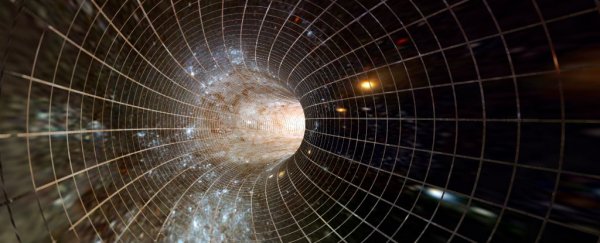It's probably not news to you that as residents of this fine Universe we call home, we can only move left or right, up or down, backwards or forwards. That's it. There aren't any other possible directions that aren't some combination of those three.
These are our Universe's three spatial dimensions, and why we have exactly three of them (not just one or two, five or 80) is still something of a mystery.
Not that physicists haven't been searching for an answer - explaining the fundamental nature of reality is just a really hard nut to crack. But a new paper has shown that a universe with our laws of thermodynamics (which describe how energy moves around) will always get stuck with exactly three spatial dimensions. So basically, this paper just explained the Universe.
The researchers, from the University of Salamanca in Spain and the National Polytechnic Institute of Mexico, explained it with the first and second laws of thermodynamics.
For our purposes, these laws say that a system - whether it's a universe, a human, or a rock - can't do anything that requires more energy than it has to start out, unless it gets more energy added. And if the system gets bigger without gaining energy, like we think our Universe has, then, on average, there's less energy available in any particular place.
Put those together, and it means that once the Universe stopped having enough energy to complete the same action everywhere, the whole Universe could never do that thing again - though certain parts of it might be able to if they could concentrate enough energy.
We'll get back to that shortly, but the above description probably irks some of my fellow physicists. Take a deep breath. It'll be okay.
Thermodynamics works in any number of dimensions. It works in our 3D Universe, of course, but it also would work in two spatial dimensions, where the only possible directions to travel were left-right and up-down. In a two-dimensional universe, it would be physically impossible to move backward or forward, because that direction just wouldn't exist.
But, as the authors of this new paper, published in Europhysics Letters, explain, a universe could also have four dimensions: left-right, up-down, backward-forward, and 'flirp-flarp' - or whatever you want to call the new direction.
In that universe, it would be possible to travel in a direction that's completely impossible in our Universe. And, similarly, in such a universe, the laws of thermodynamics could work perfectly well.
With this in mind, we know that energy can move from one place to another, but it would still be impossible for a system to use more energy than it has available. The same goes for five, or six, or 30 dimensions.
The physicists decided to see what happens if you start a universe with a completely undefined number of dimensions - a universe where it's unclear how many directions you can move in. As Lisa Zyga reports for Phys.org, they found something interesting.
In our incredibly early Universe - like, millionths of a trillionth of a trillionth of a trillionth of a trillionth of a second after the Big Bang - everything was really, really hot, and there were huge amounts of energy in every tiny part of space. Any number of dimensions could have worked equally well at this point; there wasn't really any way to tell the difference between a universe with one dimension and a universe with seven.
But very quickly afterwards, as the energy spread out, the Universe got caught in a kind of rut and didn't have enough energy everywhere to get out. And remember: once the Universe doesn't have enough energy to get out of somewhere, it's never going to.
The rut that everywhere in the Universe settled into was one with three spatial dimensions - exactly the Universe that we see today, says the team. The paper makes it clear that among all of the possible numbers of dimensions, our lowly three was inevitable.
Oh and by the way, the researchers also propose that it's possible, in theory, to pack enough energy into a tiny bit of space that - in that one spot - the Universe momentarily escapes its rut. It might take a particle accelerator the size of the Solar System, but in principle, it's doable.
If we ever do get something like that running, maybe we'll see a proton, for the most fleeting of moments, move flirp for a few trillionths of a metre before returning to the boring old left.
